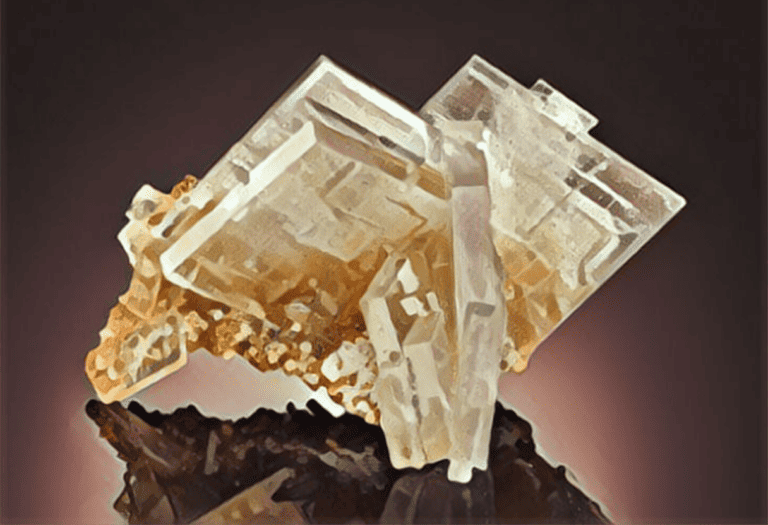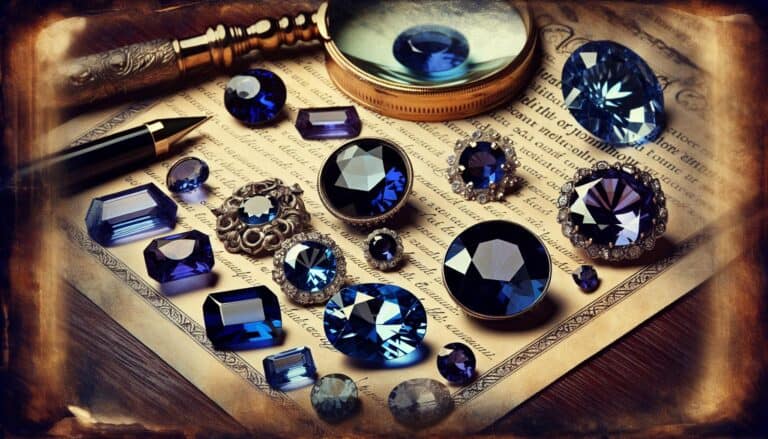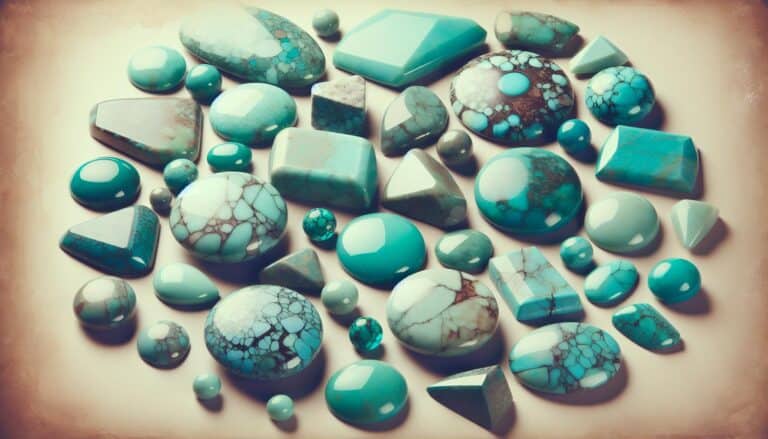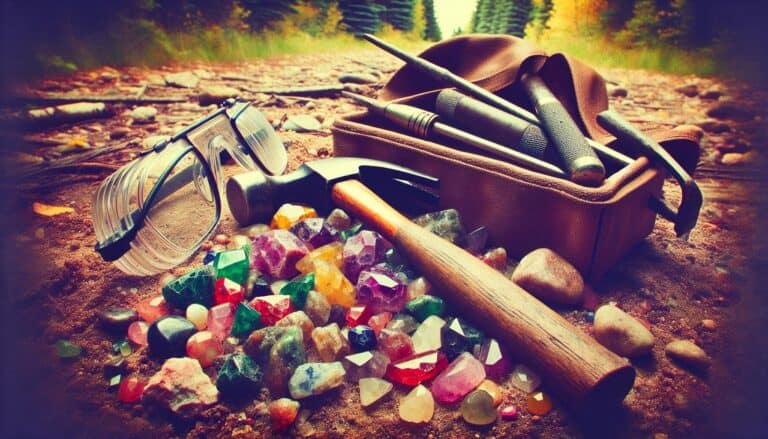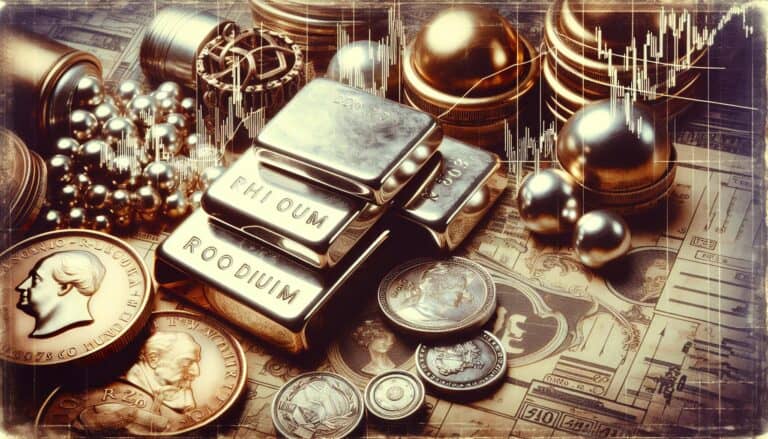Ever wondered about the value of that shimmering piece of aventurine you’ve come across?
Aventurine, a gemstone beloved for its sparkling inclusions, isn’t just a feast for the eyes; it’s also a fascinating subject when it comes to assessing its worth.
Understanding aventurine’s value involves more than just admiring its glittery allure. Factors like color, clarity, cut, and carat size play significant roles in determining its market price.
Let’s dive into what makes aventurine a gem worth considering for your collection.
Aventurine’s value hinges on color, clarity, cut, and carat size. Green aventurine, especially in vivid shades, is most valued. Rarity, color consistency, and expert cutting enhance worth. Market demand and availability, along with the stone’s unique aventurescence, also significantly influence its price.
What Is Aventurine?
Aventurine is a form of quartz, cherished for its translucency and the shimmering effect known as aventurescence. This unique glitter is caused by mineral inclusions within the stone, often creating a speckled appearance that entices collectors and jewelry enthusiasts alike.
Most commonly found in green, aventurine also presents itself in a range of colors from blue to brown, each hue bringing a different value aspect to the stone. Your attention might be captured by the more rare red, peach, or yellow aventurine, attributable to specific mineral traces within the quartz.
Beyond its beauty, aventurine is embedded with cultural significance and history. Many believe it to bring luck and prosperity, linking it back to the age-old notion of green as the color of wealth. This gemstone is not just a pretty piece for your collection but a slice of history and culture, carried forward in every shimmering facet.
Healing properties are often attributed to aventurine. Advocates for crystal healing value the stone for its supposed abilities to soothe the heart and calm emotional wounds. Whether or not you subscribe to these beliefs, there’s no denying that aventurine’s allure isn’t just skin deep – it’s a gemstone with depth in both appearance and lore.
In terms of practicality, aventurine is hard and durable, making it suitable for a variety of jewelry settings and daily wear. With a Mohs hardness scale rating of 6.5 to 7, it resists scratches better than softer gemstones, solidifying its position as a favorite in rings, pendants, and bracelets meant to last.
Aventurine Prices: Factors That Affect Value

Color, Clarity, and Cut Quality
When you’re assessing aventurine’s worth, color is paramount. Each hue represents a different value, with green aventurine being the most recognizable and sought-after. It’s important to note that the more intense and uniform the color, the more valuable the stone is likely to be. Variations such as orange or blue aventurine can also fetch a high price if they display a vibrant, consistent shade.
Clarity in aventurine refers to its translucency and the visibility of internal inclusions. Stones with fewer inclusions or those that enhance the stone’s aesthetic can add to its value. In contrast, excessive cloudiness or unappealing inclusions diminish its worth. Remember, the charm of aventurine often lies in its natural quirks, which can sometimes increase its appeal.
The quality of the cut also plays a vital role. A well-executed cut will showcase aventurine’s aventurescence and color to its best advantage, thus maximizing its aesthetic appeal. Precision in cutting and polishing can have a substantial impact on the price; expertly cut gems display the stone’s beauty and shimmering effect more effectively, making them more desirable to collectors and jewelers.
Market Demand and Availability
The current market demand for aventurine influences its price significantly. As with any gemstone, popularity can wax and wane, and as you’d expect, when aventurine is in vogue, prices tend to increase due to higher demand. Conversely, when demand falls, prices may also dip, making it a more accessible purchase for a wider audience.
Availability is also crucial. Although aventurine is relatively abundant compared to more precious gems, certain colors or grades may be rarer and, therefore, more expensive. It’s worth considering that the rarity of a specific color or quality of aventurine can lead to a spike in its market price.
Moreover, the localities where aventurine is mined can affect cost. Stones sourced from traditional or prestigious regions may carry a higher price tag simply due to provenance. As mining practices and technologies evolve, so too does the availability of high-quality aventurine, potentially influencing the market value.
Keep in mind that the collective impact of these factors establishes aventurine’s worth on the market. Whether for collection, investment, or personal use, understanding these determinants will help you gauge the value of your aventurine piece.
Understanding Aventurine: A Rare Gem
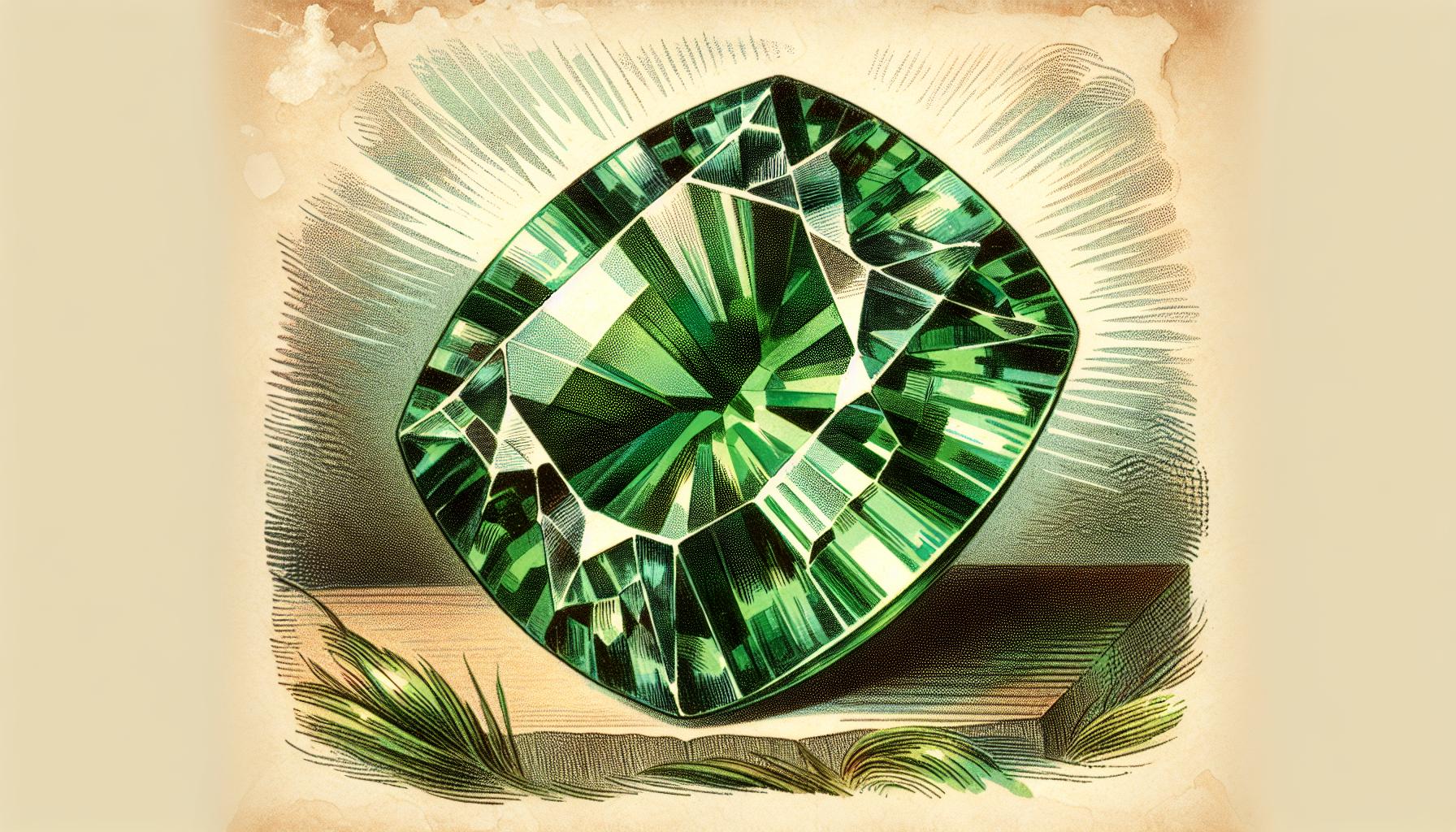
Aventurine’s appeal lies not only in its aesthetic charm but also in its rarity and exclusivity. Unearthing the intricacies of this gem will give you a deeper appreciation for its value and the factors that make it stand out in the world of minerals.
The Rarity of Aventurine
When you come across aventurine, you’re encountering a mineral that’s less commonly found than many other quartz varieties. Its distinctive sparkly appearance comes from inclusions of minerals such as fuchsite, hematite, or goethite, which are not always uniformly distributed throughout the quartz. This sparkle effect is challenging to replicate, contributing to its unique status in the gem world.
The rarity of aventurine varies with color. The most prevalent color is green, but it’s the richer, more vivid shades of green that are less commonplace and thus more sought after. Other hues, like blue or peach, are rarer and can fetch higher prices on the market due to their scarcity.
- Green Aventurine is relatively common but high demand keeps its market lively.
- Blue Aventurine is scarce, with its value reflecting its rare occurrence.
- Peach Aventurine possesses uniqueness that makes it a specialty among collectors.
Origins and Characteristics
Aventurine’s origins play a crucial role in determining its characteristics and therefore, its worth. It’s primarily mined in India, Chile, Spain, Russia, and Brazil, with each location producing stones with distinctive qualities.
- Indian Aventurine is renowned for its rich, green color and is often used in jewelry.
- Chilean Aventurine can feature a unique translucency that’s prized by certain collectors.
- Russian Aventurine often comes with glittery inclusions that catch the light with an eye-catching brilliance.
Each region produces aventurine with different levels of clarity and color intensity, which are key attributes impacting its market value. With its quartz-based composition, aventurine is a durable material, scoring a 6.5 to 7 on the Mohs hardness scale, ensuring it’s suited for all types of jewelry.
The mineral’s inclusions, while contributing to its allure, also influence its strength. Stones with fewer inclusions are less prone to cracking or chipping, an essential consideration for long-lasting wearability.
By understanding where aventurine comes from and what makes it rare, you can better assess the gemstone’s true value. Whether you’re a collector, a jewelry enthusiast, or simply captivated by aventurine’s natural beauty, recognizing its rarity and origins will enhance your admiration for this sparkling wonder.
Aventurine Grading and Valuation
The Grading System for Aventurine
When you’re looking to understand the worth of aventurine, it’s crucial to familiarize yourself with the grading system that professionals use to classify this gemstone. Grading aventurine is an art in itself, considering the absence of a standardized grading scale like the one applied to diamonds. However, there are common factors that experts consider:
- Color: The most valuable aventurine colors are deep, intense green, blue, or red hues. You’ll find that color uniformity and saturation are key in valuing aventurine.
- Translucency: Higher-quality aventurine has a smooth, glass-like appearance with uniform translucency. Too much opacity can lower the stone’s value.
- Aventurescence: This is the stone’s defining feature. Strong, sparkling inclusions are a mark of a high-grade aventurine, enhancing its appeal and value.
- Cut and Shape: The proficiency with which aventurine is cut and shaped can significantly influence its worth. A skillful cut that enhances the gemstone’s aventurescence will fetch a higher price.
- Size: Typically, larger stones are rare, and thus, they’re often more valuable. However, the overall quality must still be assessed.
Familiarizing yourself with these criteria can help you estimate aventurine’s value before heading to a professional for a more precise evaluation.
Certification and Appraisal
Seeking a Certification from a reputable authority can significantly impact aventurine’s value confirmation. Gemological institutes and laboratories provide grading services where your aventurine’s characteristics are thoroughly assessed. A certificate from such institutes can authenticate the gemstone’s natural origin, rule out treatments, and confirm its grade based on the factors mentioned above. Ensure the certification comes from an organization with international recognition for the most accurate appraisal.
When it comes to appraisal, it’s recommended to approach certified gemstone appraisers. They’ll not only take into account the gemstone’s grading but also its:
- Current market demand
- Rarity in the market, particularly for certain colors
- Historical and cultural significance, which can add value beyond the physical characteristics
The appraiser will combine these factors with market comparables—recent sales of similar aventurine stones—to arrive at a monetary value. Keep in mind, appraised value can fluctuate based on market trends, so an appraisal is generally considered a current assessment rather than a guaranteed future valuation.
Having your aventurine certified and appraised will provide you with detailed insight into its worth, which is essential whether you’re adding to your collection, insuring your stone, or considering a sale.
Current Market Trends in Aventurine Pricing
Aventurine, as with any gemstone, is subject to fluctuations in the market. These can be influenced by fashion trends, availability of raw materials, and economic conditions. It’s important for you to monitor these trends, as they directly impact aventurine’s pricing.
In recent years, there has been a growing demand for natural and ethically-sourced gemstones. Aventurine fits this category well, which has bolstered its appeal. The green variety, reminiscent of jade, sees considerable attention, especially in Asian markets where green gemstones hold cultural significance. This demand can lead to a spike in prices for high-quality specimens.
Technology also plays a role; advancements in mining and processing have made aventurine more accessible, potentially leading to a more competitive market. However, the unique qualities of aventurine, such as its aventurescence, mean that high-grade stones maintain their value. While larger quantities might be available, top-tier aventurine remains rare.
Here’s a snapshot of average prices based on current market analysis:
| Quality | Size | Average Price |
|---|---|---|
| Low | 1 ct | $2-5 |
| Medium | 1 ct | $5-10 |
| High | 1 ct | $10-30+ |
Prices scale with size and quality; larger, premium stones can fetch significantly higher prices. Remember that this is an average – regional differences can lead to price variation.
Social media and e-commerce have grown as platforms for selling aventurine, thereby increasing visibility and demand. Influencers and celebrities sporting aventurine jewelry can cause short-term price increases and can spur consumer interest.
When considering purchasing aventurine, stay aware of these trends and consult with reputable dealers. Staying informed will help you understand why prices vary and what you might expect to pay for quality aventurine in the current market. Keep in mind the certification and appraisal you’ve secured; they’re invaluable tools in navigating the marketplace effectively.
The Most Expensive Aventurine
When hunting for the crème de la crème of aventurine, you’ll notice that the highest-quality stones command premium prices. These stones boast an exceptional aventurescence, a smooth and even display of sparkling reflections. Their color saturation is also top-notch, making them a coveted item among collectors and luxury jewelry enthusiasts.
The value of aventurine may reach significant heights when certain conditions are met:
- Large size: The bigger the gemstone, the rarer and more costly it becomes.
- Deep, rich color: Sought-after hues like a dark, forest green or a saturated blue seem to fetch higher prices.
- Quality of cut: Expertly cut gems that enhance the stone’s natural sparkle will have an increased worth.
- Clarity: The cleaner the stone with minimal inclusions or blemishes, the more it’s valued.
Here’s an example to illustrate the kingpins in aventurine pricing:
| Attribute | Description | Impact on Price |
|---|---|---|
| Size | Large, above-average size | Significantly higher |
| Color | Deep, consistent coloring | Increased price |
| Artistry of the cut | Precision cuts that enhance luster | Upscale value |
| Clarity | Lesser inclusions, higher translucency | Greater worth |
Furthermore, when aventurine is part of an antique piece or a designer jewelry item, its price can skyrocket. The association with a particular era or a famed designer can lend an extra layer of value to the stone.
Aside from aesthetics, if an aventurine gemstone has a storied provenance or it’s tied to a historically significant event, you’ll see the numbers on its price tag multiplying. Stones with such illustrious backgrounds often end up at high-stakes auctions, where they charm the elite who understand their worth beyond mere beauty.
Keep in mind that the market for aventurine is ever-changing. While today’s most expensive aventurine may be defined by its size, color, and clarity, tomorrow’s might be sought after for its historical relevance or unique origin story. As a savvy collector or an informed buyer, keeping a pulse on the latest gemstone trends will ensure that you’re always aware of what makes aventurine soar in value.
Buying Aventurine: Tips and Recommendations
Where to Purchase High-Quality Aventurine
When you’re in the market for high-quality aventurine, selecting a reputable dealer is key. Craft fairs, gem shows, and specialty crystal shops often carry an array of gemstones including aventurine. For convenience, you might turn to online marketplaces; however, be cautious as photographs can be misleading.
Authorized jewelers and gemstone dealers often provide certification of authenticity, ensuring that what you purchase is genuine. When possible, opt for retailers that are members of well-known gemological associations as they are more likely to uphold high standards.
Remember, the place of purchase can influence the price of aventurine. Buying directly from the source—countries like India, Brazil, and Russia—may offer cost benefits but also comes with challenges regarding the assessment of quality without in-person inspection.
Ensuring Authenticity and Value
Ensuring you’re getting real aventurine that’s worth the price involves a few critical checkpoints:
- Request documentation: A certificate of authenticity or a grading report from a reputable institution can be invaluable.
- Know what to look for in aventurine: Familiarizing yourself with the gemstone’s properties—such as color variations, patterns of aventurescence, and typical inclusions—can be extremely helpful.
- Check the reputation of the seller: Look for customer reviews, business accreditation, and return policies.
Lastly, since aventurine is durable, it’s a popular choice for everyday jewelry. Keep in mind the craftsmanship of the jewelry piece, as well-made settings can enhance the overall value of your aventurine purchase.
Conclusion: Buying & Selling Aventurine
Remember, aventurine’s worth goes beyond its price tag. It’s a gemstone steeped in history and lore, believed to attract luck and offer healing qualities.
When you’re in the market for this shimmering stone, do your homework. Choose a trusted dealer and verify the authenticity to ensure you’re getting the real deal.
With the right care and a quality setting, your aventurine piece isn’t just a purchase—it’s an investment in beauty and tradition that you’ll cherish for years to come.



